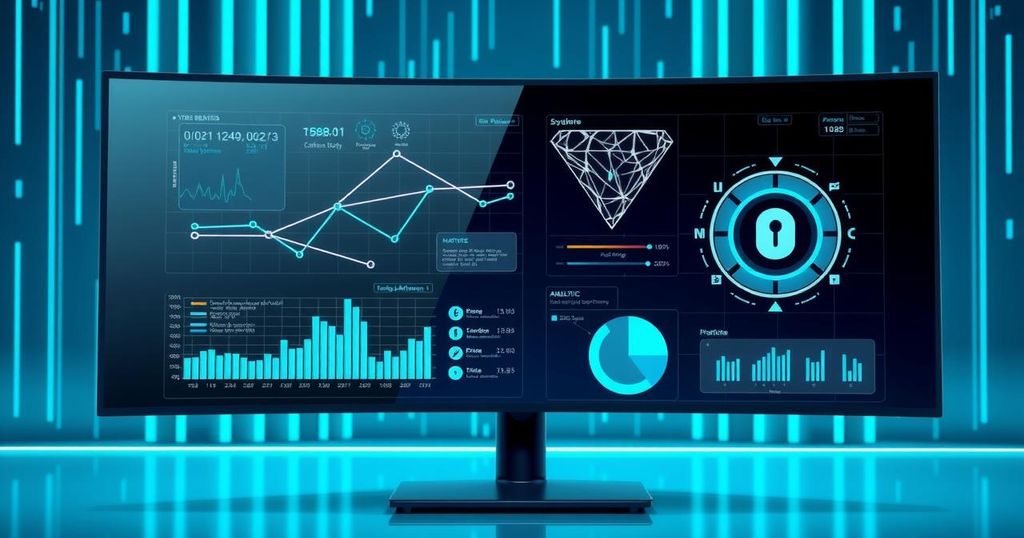Transforming Cybersecurity: The Role of AI in Incident Response
AI is transforming incident response from reactive to proactive, enhancing threat detection and automating various investigative tasks. By leveraging advanced algorithms and Natural Language Processing, AI tools streamline cybersecurity processes and improve response times. Major vendors like CrowdStrike and Microsoft are pioneering AI integrations, but full automation remains a work in progress, requiring human oversight to maintain trust.
Artificial Intelligence (AI) is revolutionizing incident response, transforming it from a chaotic reaction to proactive threat detection. Instead of merely responding to alerts like a smoke alarm in a mansion, AI actively investigates potential hazards, predicting threats before they escalate into significant issues. It offers defense teams advanced capabilities that transition them from frantic responses to informed, real-time action.
As threats evolve to be more rapid and deceptive, AI enhances cybersecurity strategies. Moving away from traditional, reactionary methods resemblant of a whack-a-mole game, AI implements a context-aware defense that continuously analyzes patterns, offering insights that are not just reactive, but predictive and preventive.
According to David Gruber of Enterprise Strategy Group (ESG), AI introduces two major advancements in incident response: improved threat intelligence application and enhanced automation. Implementing these AI-driven strategies streamlines the entire security operations (SecOps) process. AI is not just enhancing threat detection but is also automating tedious manual investigation tasks, leading to faster incident resolutions.
The shift away from signature-based detection methods is making headway thanks to AI. Machine learning algorithms are now adept at continuously analyzing network activities to identify irregularities, marking a momentous leap beyond old school methods. Doug Kresten, CISO at Appfire, notes that while traditional detection techniques retain their relevance, they will soon fade beneath the innovative potential of AI.
Major players like CrowdStrike, Microsoft, and Palo Alto Networks are leading the charge in integrating AI within their systems. CrowdStrike’s Falcon monitors endpoint behaviors in real-time, Microsoft’s Defender fuses machine learning with threat intel, and Palo Alto enhances its Cortex XDR with similar advancements. These AI-driven systems significantly improve both detection and incident analysis capabilities.
Natural Language Processing (NLP), the segment of AI responsible for making sense of human language, has quietly enhanced incident analysis. Its knack for parsing through extensive logs and reports brings clarity and efficiency to a previously daunting task. Kresten emphasizes its impact on workforce skills, allowing employees to focus on system operation without needing deep technical knowledge.
A study reveals that NLP-driven chatbots have reduced incident triage response times by 70% with an impressive user satisfaction rate of 85%. Models like BERTSUM and T5 have also improved report comprehensibility, cutting the time needed for stakeholders to grasp key highlights by 60%. Tools like Splunk and QRadar harness GEN-AI capabilities to automate incident summaries and analyses effectively.
Besides detection, AI is stepping into response roles, with security vendors incorporating AI models that autonomously isolate threats and patch vulnerabilities. However, experts Gruber and Kresten highlight a critical point: full autonomy in incident response is still a work in progress. Organizations prefer having a human verify AI decisions until trust is built.
Challenges persist, particularly with API developments necessary for complete automation. Gruber notes that as these systems mature, automated responses could gain traction within a year. Yet, attackers are not sitting idle; they are embracing generative AI for advanced tactics like phishing and malware development. Kresten comments that businesses may need to adopt aggressive AI strategies to combat these rising threats effectively.
In this dynamic landscape, AI has evolved from a mere helper to a powerhouse capable of preempting breaches before they even happen, highlighting its growing importance in cybersecurity.
In summary, AI is reshaping incident response in the cybersecurity realm by making it more proactive and efficient. Its abilities in threat detection and automation allow teams to respond to potential incidents faster than traditional methods. Major companies are integrating AI to enhance product capabilities, while tools like NLP assist in incident analysis. However, as the technology advances, the ongoing challenges highlight the necessity for further development in security responses, illustrating that trust and human oversight remain crucial as organizations fully embrace AI.
Original Source: www.csoonline.com




Post Comment